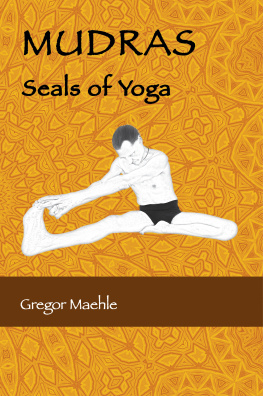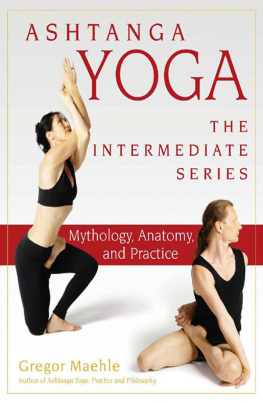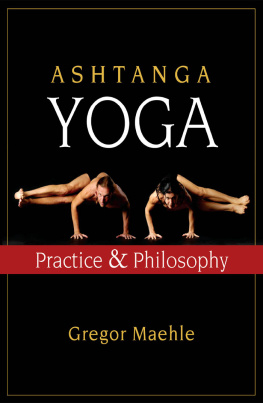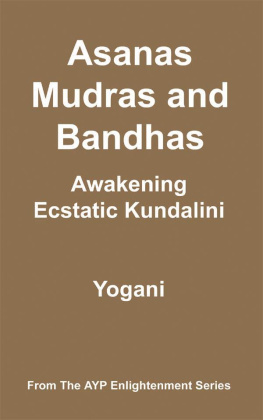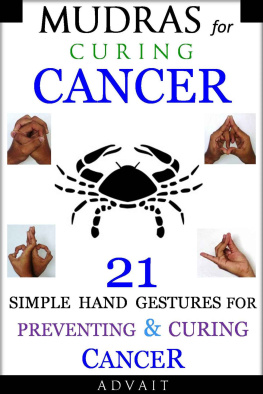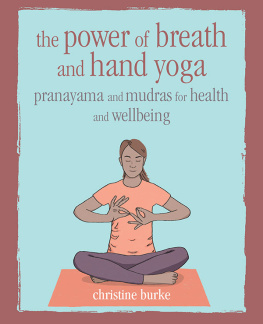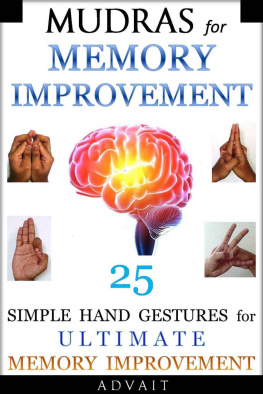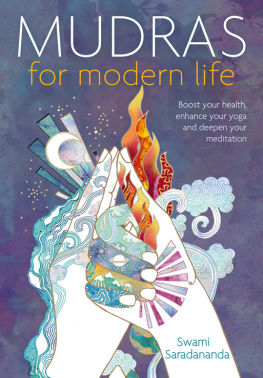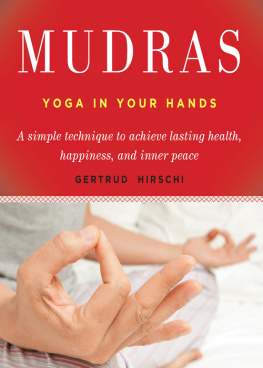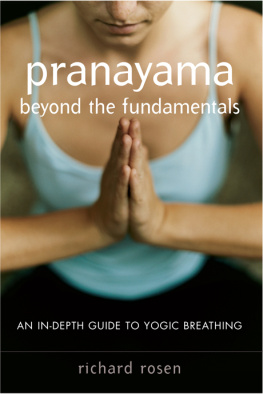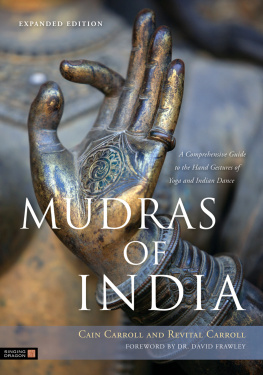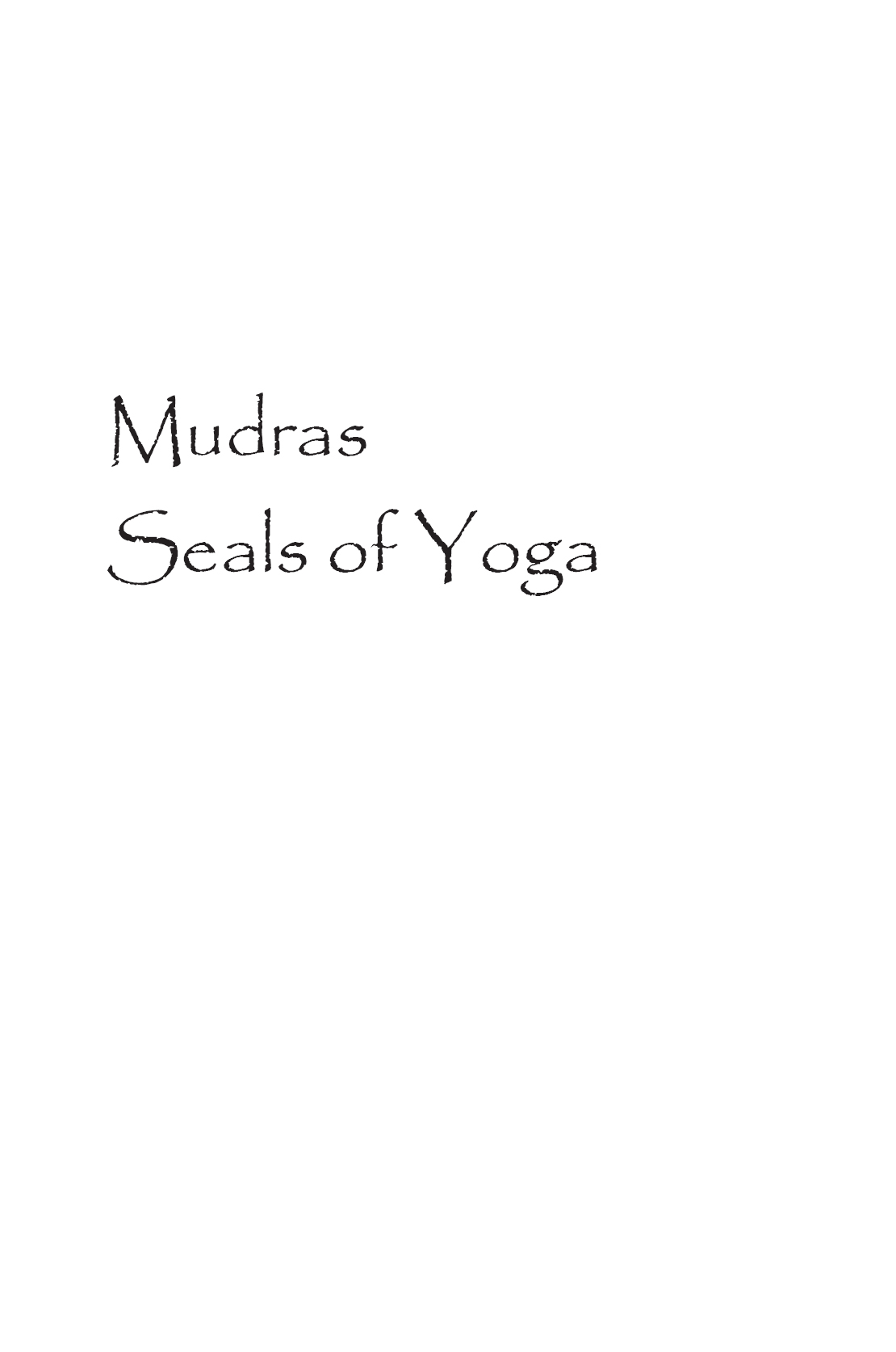
By the same author:
Ashtanga Yoga: Practice and Philosophy
Ashtanga Yoga: The Intermediate Series
Pranayama The Breath of Yoga
Yoga Meditation: Through Mantra, Chakras and Kundalini to Spiritual Freedom
Samadhi The Great Freedom
How To Find Your Lifes Divine Purpose Brain Software For A New Civilization
Chakras, Drugs and Evolution A Map of Transformative States
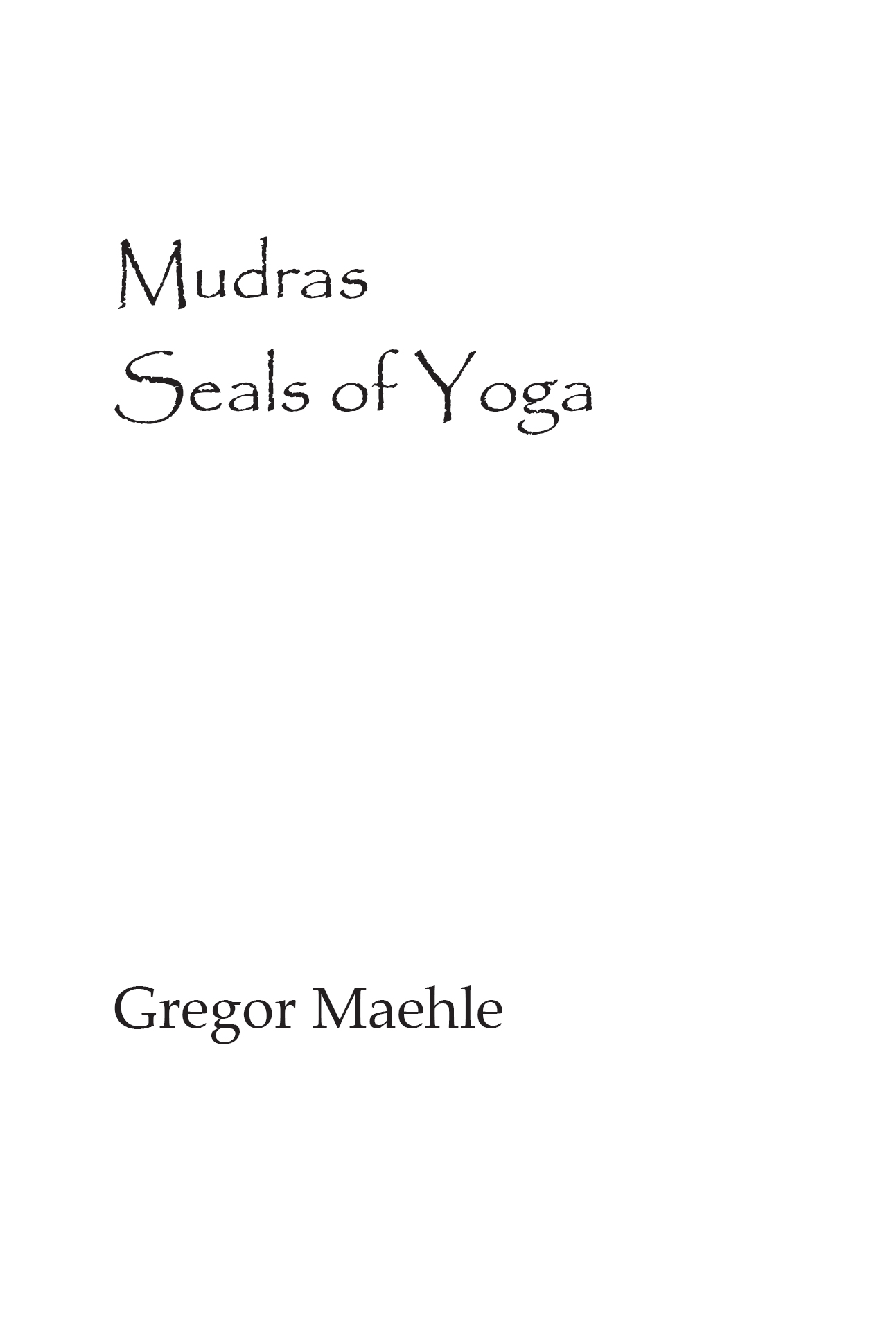
Published by Kaivalya Publications
PO Box 181
Crabbes Creek, NSW 2483
Australia
Gregor Maehle 2022
This book is copyright. Apart from any fair dealing for private study, research, criticism or review, as permitted under the Copyright Act, no part may be reproduced by any process without written permission of the author.
First published 2022

Maehle, Gregor
Mudras: Seals of Yoga/by Gregor Maehle;
ISBN (pbk.) 978-0-6488932-5-7
ISBN (epub.) 978-0-6488932-6-4
Includes bibliographical references
Includes index
Hatha yoga
Every effort was made to contact the holders of copyright of quoted material, but this did not prove to be possible in every case.
Dedication
To the ancient sages of India who blazed a trail, which even today can still be traced.
Disclaimer
This book does not constitute medical advice. Contact a medical practitioner to determine whether you are fit to perform these yogic exercises.
NOTES
If not otherwise stated Hatha Yoga Pradipika quotations refer to the standard 4-chapter edition, rather than the 10-chapter edition. Similarly, if not otherwise stated quotations from the Gheranda Samhita are from R.B.S. Chandra Vasus translation.
Acknowledgements
My gratitude to Shri B.N.S. Iyengar who with his instruction on the mudras of the Gheranda Samhita, which he himself had received from Shri T. Krishnamacharya, kindled my interest and research. My gratitude to my wife Monica, who continues to support me in my outlandish lifestyle, where little is happening outside from yoga. To my curious students who force me to develop further.
To the literary divisions of the Kaivalyadhama and the Lonavla Yoga Institutes for their continued effort in making shastras available, particularly to the late Dr M.L. Gharote and his son Dr M.M. Gharote.
Preface
I am hereby presenting the eighth volume or my series of yoga textbooks, Mudras Seals of Yoga. I began writing this book over eleven years ago, and it was to be the first volume in a Mudra, Pranayama, Meditation trilogy. Instead, I changed course and focussed on Pranayama The Breath of Yoga and subsequently Yoga Meditation Through Mantra, Chakras and Kundalinito Spiritual Freedom. Although to a large extent supported and informed by the mudra material, the methods in these two volumes proved so potent that I neglected the original project. After my fifth volume Samadhi, The Great Freedom, interest in my work grew and I spent more and more time presenting my material to audiences worldwide. Being by nature a recluse-level introvert, I had to change my personality to rise to that challenge. For a number of years, I had the privilege to connect with students worldwide and see them transform through the work. On the downside, this led to my writing falling by the wayside. While further volumes condensed in my head, I wondered how I would ever find the time, introversion, and muse to write them.
This opportunity came during the COVID pandemic. With Australia closing its borders for almost two years, I completed two important long-term projects, How to Find Your Lifes Divine Purpose, containing my teachings on the yogic process of sankalpa (affirmation, resolution) and bhavana (cultivation of thought processes in alignment with the Divine) and Chakras, Drugs and Evolution A Map of Transformative States, my response to the current reboot of the psychedelic revolution, including a topography of mystical experiences. After completing both, the path was now free to return to the long-neglected Mudras Seals of Yoga. This project kept lingering in the back of my mind because the chakra-Kundalini meditation described in Yoga Meditation is a demanding and complex method that demands a certain readiness of mind. This readiness is often achieved through the long-term practice of asana and pranayama, but it can still be a taxing process despite these. Apart from other important subject matter, this current volume describes how mudras can supercharge and accelerate ones asana, pranayama and meditation practice so that success in chakra-Kundalini meditation is achieved more quickly. May the mudras lead to swift success!
List of Shastras consulted in this text:
Amanaska Yogah
Amrita Nada Upanishad
Aparokshanubhuti of Shankaracharya
Bhagavad Gita
Brhad Aranyaka Upanishad
Brhadyogi Yajnavalkya Smrti
Chandogya Upanishad
Dattatreyas Yogashastra
Dhyanabindu Upanishad
Gheranda Samhita
Goraksha Shataka
Hatha Ratnavali of Shrinivasayogi
Hatha Yoga Pradipika (10-chapter edition)
Hatha Yoga Pradipika (4-chapter edition)
Hatha Yoga Pradipika with the Commentary Jyotsna of Brahmananda
Hatharatnavali of Shrinivasayogi
Hathatatva Kaumudi of Sundaradeva
Hathayoga Manjari of Sahajananda
Jogapradipyaka of Jayatarama
Kapalakurantakas Hathabhyasa-Paddhati
Khechari Vidya of Adinatha
Kumbhaka Paddhati of Raghuvira
Maitri Upanishad
Mandala Brahmana Upanishad
Nadabindu Upanishad
Nathamunis Yoga Rahasya
Ramayana
Shandilya Upanishad
Shiva Samhita
Siddha Siddhanta Paddhati
Trishikhi Brahmana Upanishad
Vasishta Samhita
Yoga Bhashya
Yoga Chudamani Upanishad
Yoga Kundalini Upanishad
Yoga Makaranda
Yoga Rahasya
Yoga Sutra
Yoga Taravali
Yoga Yajnavalkya
Yoga Tattva Upanishad
Yuktabhavadeva of Bhavadeva Mishra
Introduction
WHAT IS MUDRA
Writing about asana, pranayama, meditation or samadhi is relative straightforward. They are sequential limbs of yoga with clear demarcations. Even within those demarcations there are reasonably clear rules in which order, for example, pranayama techniques or samadhis are practised. They are usually performed in ascending order of difficulty. Writing about mudras is a more complex challenge. Mudra is not one of the eight limbs of yoga, which according to Yoga Sutra II.28 are restraints, observances, postures, breath extension, independence from external stimulus, concentration, meditation and revelation. So, what are mudras if it is not a yogic limb? Arent they just fancy hand positions?
Hand mudras, so-called hasta mudras are a feature of tantric Buddhism and in Indian classical dance, but in yoga really only a small part of the subject of mudra
Next page
